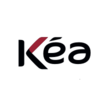Detailed content of our market study
 Inforamtion
Inforamtion
- Number of pages : 35 pages
- Format : Digital and PDF versions
- Last update :
 Summary and extracts
Summary and extracts
1 Market overview
1.1 Definition and scope of study
Confectionery products, mainly made from sugar and enhanced with flavorings and colorings, come in a variety of attractive forms, such as jelly beans, lollipops and chewing gums. These products appeal to a wide audience, from children to adults.
In 2023, the French confectionery market will continue the recovery momentum already established in 2022, despite the challenges posed by the health and economic crisis.after being heavily impacted, the sector has seen significant growth, with a 3.7% increase in sales volume, gradually returning to pre-crisis levels, and a 13%increase in valuebetween 2022 and 2023. Chewing gum is also recording a very satisfactory rise, of over 28% between 2020, the covid period, and today.
This recovery is underpinned by innovation on the part of manufacturers, who have adapted to consumer expectations in terms of naturalness and quality. Considerable efforts to eliminate controversial ingredients and develop healthier recipes have helped meet growing demand for less artificial, more authentic products.
In response to these trends, the French confectionery market is moving towards products that offer both quality and pleasure, while remaining affordable. With an average French annual budget for sweets and confectionery of €41.30, and a frequency of purchase of around once a month, confectionery remains an affordable and much-appreciated indulgence.
In this context, confectionery is positioned as a safe haven, a reassuring pleasure for consumers. Despite variations in the market, notably a decline in the chocolate segment, candy continues to enjoy constant popularity, with Haribo remaining the undisputed leader in the French market.
1.2 Optimism for the global market
The global market
Confectionery market sales World, ****-****, in US$ billion Source: ****
The confectionery market was valued in **** at $***.** billion, a substantial *.*% decline on ****. In ****, the market was worth USD ***.** billion, and a CAGR of *.**% is forecast for the period ****-****, to reach a market value of USD ***.** billion in ****.
Global market players
top confectionery market players by sales World, ****, US$ million Source: ****
From this ranking, we can see that the USA, Japan and Switzerland are home to many of the market's major players, with the top three being Mars Inc, Ferrero Group and Mondelez International. between them, these ** players accounted for **.* billion USD in ****, or almost **% of the global market. With the exception of Pladis and Haribo, which remained stable, most players saw their sales increase between **** and ****.
1.3 The French market faces a number of challenges
The confectionery market, excluding chewing gum, has been estimated at *.* billion euros in ****, with growth of **%.
Sweets and lollies attract a wide range of consumers, from children to the elderly. This diverse customer base helps to maintain demand and ensure the market's resilience in the face of more health-oriented consumer trends. Candy manufacturers are implementing strategies to diversify their product ranges and meet consumers' varied preferences in terms of taste, texture, color and flavor. Range extensions are favored to minimize the risks associated with radical innovation.
The candy and lollipop market has enjoyed solid growth since ****, despite the economic crisis. Value sales have grown by **% since ****, and volume sales have increased by *.*% between **** and ****, reaching ***,*** tonnes by the end of **** [***].
Sales of the confectionery market in supermarkets, excluding chewing gum France, ****-****, billions of euros Source: Alliance *, Alliance * ****, Alliance * **** * Data not available
the chewing gum market has been estimated at *** million euros in **** and *** million euros in ****, recording a sharp rise of **% between the two years.
Sales of confectionery-related activities
We have identified two NAF codes related to our subject of study:
**.** "Manufacture of cocoa, chocolate and confectionery products", which includes[***]: manufacture of cocoa, cocoa butter, cocoa fat, cocoa oil ...
1.4 Foreign trade: An imbalance of power
In ****, France recorded a deficit of *** million euros in its trade balance. Even if exports increase to a CAGR of **% over the period ****-****, imports have also risen sharply annually since ****, by **%, reaching a total of *** million euros in ****.
If we project this CAGR to ****, we obtain an import value of *** million euros, and a deficit of *** million euros in ****.
Foreign trade in "Sugar and sugar factories France, ****-****, in billions of euros Source: ****
According to the confectionery union, France exported **% of its confectionery production by volume in ****[***].
In ****, France exported **.*% of its production by volume abroad [***].
Partner countries
In ****, the Netherlands, Belgium and Spain respectively accounted for **.*%, **.*% and **.*% of French confectionery imports. The first four countries accounted for almost **% of imports.
Supplier countries for code ** "Sugars and sugar confectionery France, ****, in millions of euros Source: ****
In ****, the customer countries for French confectionery were very numerous and diversified, with Germany, Spain and the United States accounting for only **% of French exports in this field.
France's main confectionery customer countries France, ****, in % of total Source: ****
2 Demand analysis
2.1 Breakdown of demand by confectionery category
Confectionery encompasses many different types of product, and the report by confectioners in France indicates the most popular, among the **% of the population who consume sweets;
Share of French people consuming the following confectionery products France, ****, in Source: ****
In ****, candies, lollipops and candy canes were the top-selling products in supermarkets, in terms of value, with a market share of **%, representing a **% increase on ****. This growth in market share was achieved at the expense of chewing gums, which, although also recording a **% increase in value, represented only **% of the market in ****. On the other hand, small confectionery and confectionery specialties saw respective increases of *% and *% in ****. Candied fruit, which had fallen by *.*% in ****, returned to growth, rising by **.*% between **** and ****.
Breakdown of confectionery sales in supermarkets by category France, ****, in percent Source: ****
Chocolate confectionery, which is not included in the above chart, nevertheless accounted for *.* billion euros in ****, making it the largest confectionery category [***]. However, the focus of this study will not be on chocolate products, as Businesscoot has a study dedicated to this subject: Le marché du chocolat et de la chocolaterie en France.
2.2 Consumer habits
Having learned about the most popular products on the confectionery market, it is useful to look at the consumption habits of the French:
Annual consumption of confectionery France, ****, in grams/day Source: ****
unsurprisingly, confectionery consumption was higher among children than adults in ****, with a daily consumption of *g for children, and *.*g for adults.
Average annual budget for confectionery in French households France, ****, ****, ****, in euros Alliance * ****
As a result, the French allocated an average annual budget of €**.* in ****[***]
Seasonality of demand:The confectionery market is particularly driven by its seasonality. Although high all year round, demand is particularly strong during the Halloween period, as the following graph shows:
Evolution of interest in candy on google France, ****-****, base *** at period peak, here in October ****
According to an OpinionWay study for Bonial, the French spend an average of €** on Halloween products. As part of this expenditure, **% of those questioned plan to buy confectionery or chocolate, which places them in the top* of planned spending
Which product categories do you intend to buy for Halloween? France, ****, in Source: OpinionWay for Bonial However, this breakdown of purchasing items is not the same for all consumers. Women are far more likely than men to buy ...
2.3 Towards healthier food consumption
In recent years, French food consumption habits have evolved, with a trend towards "healthy", organic or even vegan products. This niche demand became particularly pronounced in **** with the pandemic and subsequent confinements, as many French people changed their consumption habits and turned to healthier, more balanced products. The trendis also supported by the introduction of the nutri-score since ****, which we'll be talking about shortly after.
The Minsitère de l'agriculture has identified other trends in French food consumption in ****, the most important of which are:
Cross consumption concerns the desire of some French people to associate their meals with an experience (***), and mainly concerns urban dwellers. New forms of food sociability are changing the way the French consume, encouraging them to share their meals within a community, or to use them as tools for a political or social cause. Snacking and delivered meals are increasingly popular with the French, who have little time for meals, especially at lunchtime.
With regard to organic produce, according to LSA, between June *, **** and May **, ****, in all supermarket channels, there will be :
*.* million euros in sales generated by organic sweets and lollies (***) *.* million euros for organic chocolate confectionery, up **.*% on the previous year.
These figures ...
2.4 French favorite candy brands
In the study carried out by OpinionWay for MPF Conseil in February ****, Haribo was named the French people's favorite confectionery brand, obtaining **% of our panel's votes. It was closely followed by Tic Tac and Carambar, with respectively **% and **% of participants expressing a preference for these brands.
AEµFO+£EZFO
On average, women show a stronger preference for sweets than men, with a difference ofup to * percentage points depending on the brand. Lutti in particular stands out with the widest gap in popularity between men and women.
French favorite candy brands by gender France, ****, in % Source: ****
It is consistent to note that the preference for different candy brandsdecreases with age among the French. For example, Haribo presents the most significant gap in popularity between the **-** and **+ age groups, with a difference in appreciation approaching ** percentage points. An interesting case is that of Krema, which seems to gain in appreciation when comparing the **-** and **-** age groups. This preference can be explained by the popularity of this brand a few years ago, during the childhood of this generation, and which is no longer or less well known to the new generation. In addition, it's important to note that the deterioration of ...
3 Market structure
3.1 Numerous manufacturing processes
Confectionery can be made in many different ways, depending on the type of confectionery required. Osmosis, vitrification, gelation... are all processes that generally require the use of specially adapted machinery.
Source: ****
Gelled sweets differ from other sweets in that they contain gelling agents in addition to sugar and glucose syrup. The gelling agent may be pectin, gelatin, agar gum or starch, with a residual moisture content of **%. [***]
In the case of starch-based jelly sweets, sugar is dissolved in water, then the mixture is added to a glucose syrup. The mixture is then heated to over ***°C. Citric acid and starch are then gradually added to give the candy its texture. This requires the company to have a wide range of machinery at its disposal.
For larger companies, manufacturers also invest in automatic packaging systems to speed up production.
3.2 Confectionery production: rising numbers of companies and employees
According to Alliance *, in ****, confectioners in France accounted for **% of the French confectionery market, representing ** companies and *,*** direct jobs.
According to Urssaf, there are * NAF codes relating to confectionery:
**.**Z Manufacture of cocoa, chocolate and confectionery products **.**Z Wholesale of sugar, chocolate and confectionery products **.**Z Retail sale of bread, pastries and confectionery in specialized stores
We have produced graphs with the information corresponding to these codes, but it is important to note that the proportion and therefore the specific behavior of the confectionery business remains unknown.
Number of establishments in confectionery-related NAF codes France, ****-****, in units Source: ****
In the same way, here's what's happening with the number of employees:
Number of employees in confectionery-related NAF codes France, ****-****, in units Source: ****
3.3 Products sold mainly through supermarkets
Here is a list of the different confectionery distribution channels:
Supermarkets: supermarkets buy their supplies from large central purchasing agencies. Examples include Galec for E.Leclerc and EMC Distribution for Casino. Traditional channel: meaning bakeries, tobacconists, kiosks, service stations, vending machines, specialist retailers, cinemas... Prices are often higher than in supermarkets, but the offer is more limited. Artisan confectioners : they produce regional specialities (***) and distribute their products via stores and/or distance selling. E-commerce: there are a number of pure players specializing in online confectionery sales, including ***bonbon.com and top-bonbon.com. They offer the same brands as supermarkets, but generally at lower prices.
Supermarkets are the preferred channel for confectionery sales. As the following chart shows, it will account for over **% of sales by value in ****.
Market share in value by channel for confectionery spending France, P* ****, in Source : LSA Conso * Own-brand brands
As supermarkets are a major channel for confectionery sales, it's useful to know who the players are:
Value market share of FMCG* and FLS** retail groups France, ****, in percent Source: LSA * Fast-moving consumer goods ** Fresh and self-service
The Leclerc group , Carrefour and Mousquetaires are the three main players, with market shares of **.*%, **.*% and **.*% respectively in France in ...
3.4 A highly concentrated sector with room for new players
Typology of players :
Confectionery companies by size France, ****, in Source: ****
In ****, very small, small and medium-sized companies represented **% of confectionery companies, i.e. almost all of them. Large companies, which generate the most value, are nevertheless more limited in number, since in **** they represented *% of the number of confectionery companies.by way of example, in ****, Haribo, number * in France in the sugar confectionery market, held a market share of **.*%[***] (***).
Market share of confectionery companies France, ****, % (***) Source: ****
Market share is concentrated by a dozen or so major groups, which have succeeded in establishing themselves by producing confectionery that appeals to the general public (***). In ****, Haribo and Carambar&Co held market shares of **.*% and **.*% respectively.
Market concentration has intensified, with Haribo holding **.*% of market share in ****, followed by Carambar & Co, with **.*%. [***]
The market has been turbulent in recent years, with pronounced consolidation between the various players. Private equity fund Eurazeo created the Carambar & Co brand in **** to bring together the Carambar, Kréma, La Pie qui chante, Vichy pastilles and Mondelez confectionery businesses.
In ****, the Carambar & Co group combined its activities with Lutti, owned by a German family, which had a **.*% market share in France in **** and produces Lutti and Arlequin candies. [***]
Focus ...
4 Offer analysis
4.1 From traditional confectionery to novelties
There are many different types of sweet confectionery and chewing gum. They can be classified into * different categories.
Source: ****
Traditional confectionery is generally based on regional recipes or those inherited from within a company. Vichy pastilles, Carpentras berlingots and Montélimar nougat make particular use of this traditional image to sell themselves to consumers, and traditionally represent a niche market.
Modern confectionery, on the other hand, includes all confectionery produced on an industrial scale by large companies such as Haribo or Lutti, which is not based on a traditional or regional recipe. In this category, confectionery is intended for mass sale, such as Haribo's Dragibus and Lutti's Scoubidous.
Lastly, new-fashion confectionery is a category that covers all confectionery that has been developed recently, to meet new consumer expectations. This heterogeneous category includes organic, halal and vegan confectionery.
A further typology of confectionery is possible, based on taste, texture and format (***).
Source: ****
This variety enables some brands to position themselves as generalists (***).
Other brands choose to specialize in a particular segment and leverage their image. This is the case with gingham pastilles, which produce just one product, sold in formats that vary little. [***]
French specialties
Here's a map of French confectionery ...
4.2 Price rises driven by inflation
Confectionery prices have remained relatively stable between **** and ****, despite a slight fall since ****, with a price index in **** of **.**, below its **** level (***). [***]
However, **** saw a very sharp rise. Consumer prices for confectionery rose by **.*% , reflecting rising raw material, energy and wage costs.
Consumer price index for confectionery (***) France, ****-****, base *** in **** Source: ****
This rise stabilized in ****, but prices have not yet come down.
Prices are generally above €* per kilo for well-known brands (***) and below €* for private label packs, creating genuine competition between brands.
Source: ****
4.3 The confectionery industry and the challenges of adaptation
Reducing the amount of sugar: a sound approach
Confectionery sales have gradually evolved under the influence of changing consumer expectations. The most important trend is the marketing of confectionery that retains its appearance and taste, but with less sugar.
Haribo, for example, has developed Frutilicious and Sea Friends, which contain **% less sugar. Lutti markets its Bubblizz, Crazy Animals... with **% less sugar. This reduction in sugar content is made possible by the use of new ingredients (***). [***]
In addition to the reduction in sugar, several sweet ingredients have been reviewed, including the elimination of titanium dioxide and gelatin, the reduction of additives and the use of natural colorants. Nestlé's Smarties, for example, are made with natural colorants[***].
The Confiseurs de France **** report highlights N.A's proposal for fruit paste confectionery with no added sugar.
Is organic really a good idea?
Confectioners are also betting on the development of more natural confectionery (***) is emerging with growth of ***%, however, organic remains marginal in the sharing segment and is evolving slowly in the children's segment.
For example, Hollywood's Gum & Candy brand manager stated in ****: "Organic is not something we're looking at. Instead, we're focusing on the natural axis with Simple, with more natural ingredients, but ...
5 Regulations
5.1 Food industry regulations
The Ministry of Agriculture presents the most important regulatory texts in the agri-food sector, particularly those relating to hygiene.
EC regulation no. ***/**** assigns responsibility for food safety to the professionals who market them. This text creates an obligation of traceability, withdrawal of products likely to present a risk to consumer health...[***] EC regulation n°***/**** on food hygiene applies to all players in the agri-food sector, and requires the implementation of procedures based on HACCP principles. [***]
HACCP is an assessment tool (***) based on * principles:
Hazard analysis Identify critical control points Establish critical thresholds Implement a monitoring system to control critical thresholds Select corrective measures Apply verification measures Compile a file of principles and their application
5.2 Regulatory aspects specific to confectioners
In the case of confectionery, regulations pay particular attention to the use of chemical compounds by confectioners. The regulations stipulate that it is forbidden for manufacturers to produce confectionery containing non-edible elements, whether or not integral to the confectionery, and presenting a suffocation risk for children under * years of age. [***]
Checks carried out by the DGCCRF have shown that the vast majority of manufacturers comply with the regulations (***). The term "natural flavoring" was misused by just under half of the products analyzed. [***]
The DGCCRF noted in particular manufacturers' errors concerning the use of colorants, which did not comply with EC regulation n°****/****, and raised its concerns about the extensive use of glucose and/or fructose syrup, products with a high sweetening power. The latter can lead to a high risk of diabetes among consumers.
5.3 Organic label and nutri-score
For a brand to obtain the Bio label on one of its products, it must meet the following conditions:
at least **% of the product's components come from organic farming in accordance with EU regulations; The product complies with the rules of the official inspection system; The product comes directly from the farmer or food processor in sealed packaging; The product bears the name of the producing farmer or food processor or distributor and the name or code of the inspection body.
Within the European Union, the first regulation concerning organic farming came into force in **** (***). The new EU organic logo came into force on February *, ****.
The Nutri-Score summarizes a product's nutritional value in a single letter - from A (***).
This overall score includes positive parameters such as fiber, protein, fruit and nuts, as well as negative parameters such as kilocalories, saturated fatty acids, sugar and salt.
At a time when breakfast cereals are accused of containing elements that are too sweet for children, the signals sent by this score can prove decisive in the act of purchase.
6 Positioning the players
6.1 Player segmentation
- Haribo
- Mondelez Groupe
- Carambar & Co
- Kubli
- Mondelez France
- Lindt & Sprungli
- Mars Group
- Ferrero
- Confiserie du Nord Têtes Brûléées
- Lutti (Carambar Co)
- Clément Faugier
- Francois Doucet
- Perfetti Van Melle
- Chocmod
- Astra Sweets (Vanherpe Groupe)
- Brabo
- Douceurs du Palais
- Ricola
- Cerdan Caramelos
- Chupa Chups (PerfettiI Van Melle )
- Damel Group
- Cruzilles Confiserie
- Solinest
- Anciens Etablissements Despinoy
- Anis De L'Abbaye De Flavigny Troubat
- Aptunion Industrie
- Au Rucher De Provence
- Bonbons Verdier
- Caramels D'Isigny
- Confiserie Adam
- Confiserie Azureenne
- Confiserie De Medicis
- Confiserie Des Hautes Vosges Claudepierre Freres (Cdhv)
- Confiserie Du Mont Ventoux
- Confiserie Du Nord
- Confiserie Du Roy Rene
- Confiserie Du Tech
- Confiserie Fruidoraix
- Confiserie Gumuche
- Cruzilles (Scga)
- D Maffren
- Dolis
- Dupont D'Isigny
- Etablissements Dedieu
- Ets E Pecou
- Ets Perrin Et Compagnie
- Ets Saunion
- Fdcs
- Florian
- Francois Doucet Confiseur
- Gida
- Haribo Ricqles Zan
- Kubli
- Mon Pari Gourmand
- Pyrenees Bonbons
- Sofaco (Sté De Fabrication De Confiserie)
- Sté Moinet Vichy Sante
- Wrigley France Snc
All our studies are available online in PDF format
Take a look at an example of our research on another market!
 Choosing this study means :
Choosing this study means :
Access to more than 35 hours of work
Our studies are the result of over 35 hours of research and analysis. Using our studies allows you to devote more time and added value to your projects.
Benefit from 6 years' experience and over 1,500 industry reports already produced
Our expertise enables us to produce comprehensive studies in all sectors, including niche and emerging markets.
Our know-how and methodology enable us to produce reports that offer unique value for money.
Access to several thousand articles and paid-for data
Businesscoot has access to all the paid economic press as well as exclusive databases to carry out its market research (over 30,000 articles and private sources).
To enhance our research, our analysts also use web indicators (semrush, trends, etc.) to identify market trends and company strategies. (Consult our paying sources)
Guaranteed support after your purchase
A team dedicated to after-sales service, to guarantee you a high level of satisfaction. +44 238 097 0676
A digital format designed for our users
Not only do you have access to a PDF, but also to a digital version designed for our customers. This version gives you access to sources, data in Excel format and graphics. The content of the study can therefore be easily retrieved and adapted for your specific needs.
 Our offers :
Our offers :
the confectionery market | France
- What are the figures on the size and growth of the market?
- What is driving the growth of the market and its evolution?
- What is the positioning of companies in the value chain?
- Data from several dozen databases
Pack 5 études (-25%) France
- 5 études au prix de 74 €HT par étude à choisir parmi nos 1200 titres sur le catalogue
- Conservez -25% sur les études supplémentaires achetées
- Choisissez le remboursement des crédits non consommés au terme des 12 mois (durée du pack)
Consultez notre catalogue d’études sectorielles















